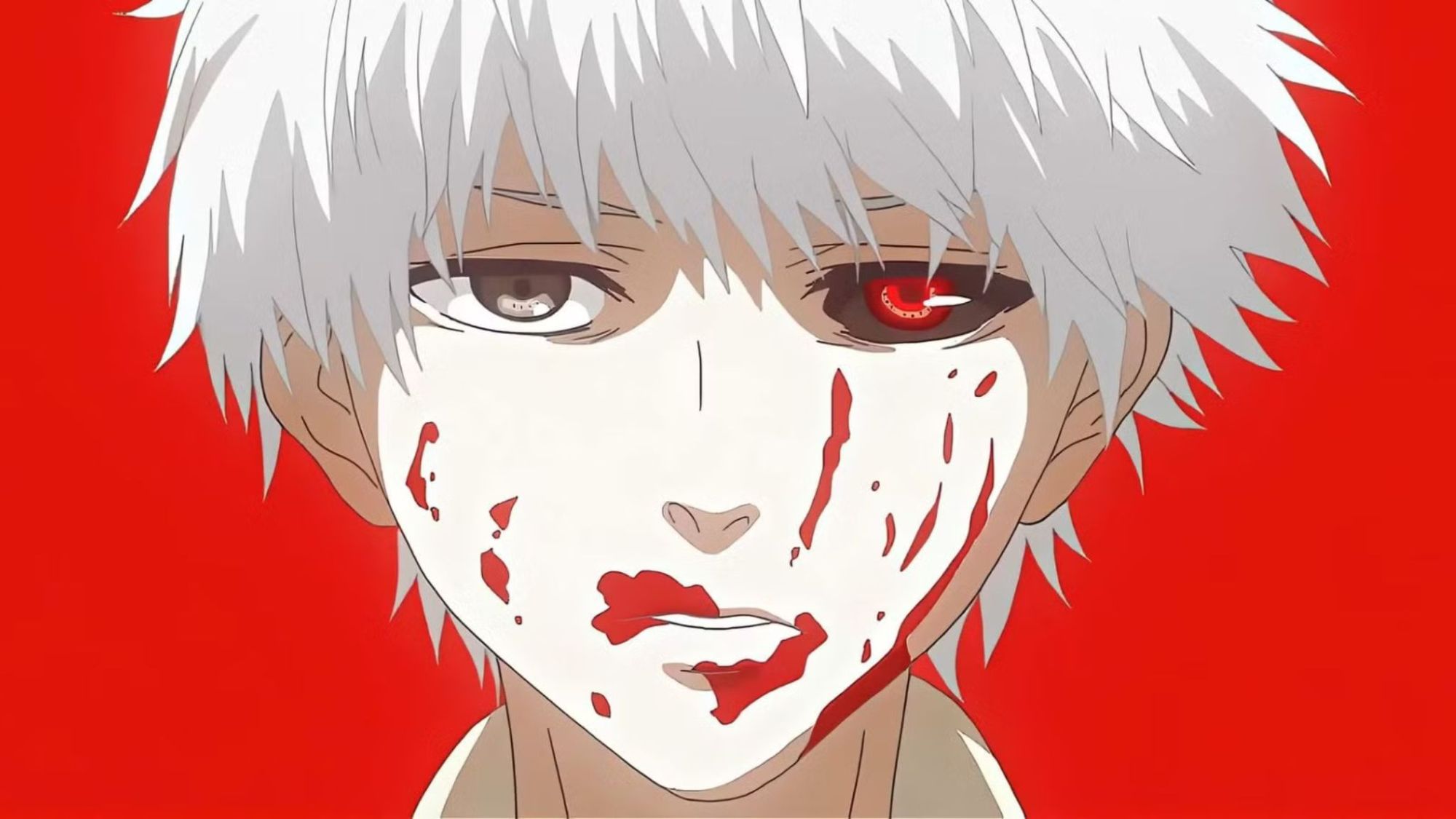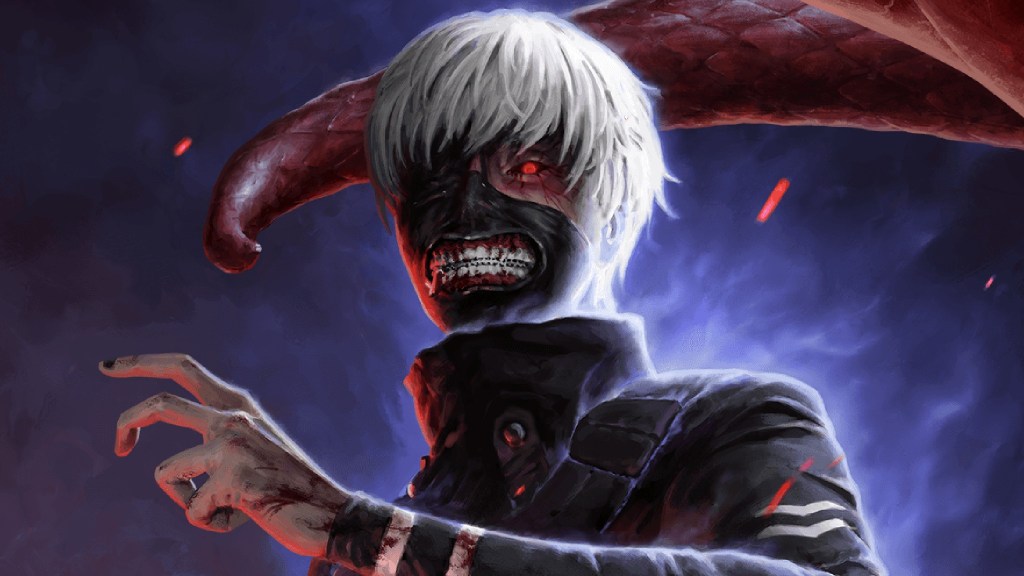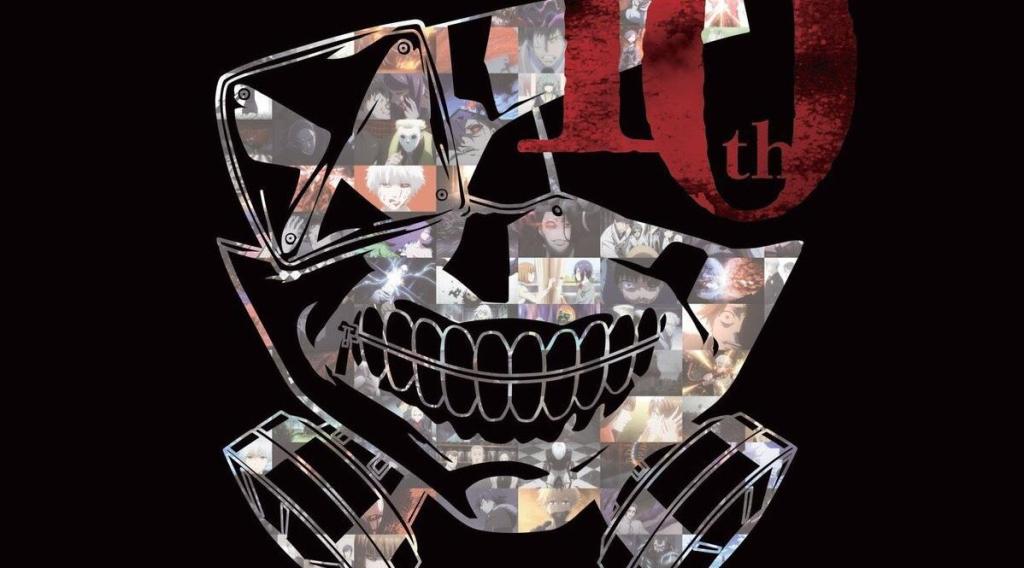
It’s 2014, and the edge was all the rage. People were back into leather, needless misery, and lots of violence. It was the perfect time for something like Tokyo Ghoul to arrive and take the anime scene by storm. It was a violent gothic horror series doused with Matrix-style aesthetic and style. The moment when the now-iconic Kaneki mask was first unveiled, anime watchers knew they were in a wild ride. Tokyo Ghoul came out at the perfect time, feeding on Attack on Titan‘s enormous success and taking advantage of the then-ongoing vampire craze that was hitting the world.
The anime adaptation’s iconic “Unravel” opening theme continues to be one of the most celebrated anime openings ever, cementing the series as one of the biggest shows of the 2010s. And then it all fell apart. While the first season was immensely popular when it aired in 2014, that same level of success never followed into the next seasons. The series’ decline can be attributed to multiple things, including low animation budget and a drop in quality from the manga towards the end. The Sink Your Teeth celebration will bring back the original series in theaters for a special commemoration of the series’ eleventh anniversary. Crunchyroll and Sony Pictures Entertainment clearly want to continue making Tokyo Ghoul relevant; now would be the best time to bring the franchise in a big way.
Why Made Tokyo Ghoul Great in the First Place

Original manga author Sui Ishida kept the traditional vampire aesthetic yet added his own spin on the trope. Rather than using vampires again, he instead used the less-used term of ghoul. In Ishida’s world, ghouls are human-looking creatures that must consume human flesh. There’s no way to turn into a ghoul through a bite. Protagonist Ken Kaneki became a half-ghoul hybrid when he was given ghoul organs. This allowed Ishida to still play with the classical themes of vampirism while developing his own unique mythology and lore. Ghouls are still underused and ill-defined in most media, giving Ishida plenty of room to create his own rules about the monsters.
The flesh-eating aspects of a ghoul also drew favorable comparisons with the titans from Attack on Titanswhich similarly used non-vampire or zombie-like monsters to create its own mythology. Given that the Attack on Titans anime only premiered a few short years before Tokyo Ghoulit was honestly a good time for anime about human-eating monsters. Both series were also incredibly bleak, with Tokyo Ghoul in particular salivating on the characters’ misery. Characters constantly die, Kaneki’s negative headspace becomes increasingly pronounced as the series continues, and it’s over-the-top violent and gory. The franchise’s darkness and leathery style has made the original series the prime example of edgy anime. The amount of edge in the series is so overbearing that it becomes almost comical, especially when viewed in a more modern context.
However, there’s a sincerity underneath the leather, distilling themes about human nature and depression. The series served as a metaphor for college life and post-graduation anxiety. Kaneki, a college student at the beginning of the series, is suddenly thrust into the adult world, forced to confront the uncaring reality of adulthood and responsibility. Kaneki’s growing nihilism and depression are a perfect representation of how it sometimes feels once you officially become an adult, with the weight of the world on your shoulders. How Ishida handles Kaneki’s depression and low self-worth feels personal, adding a genuineness to the story, with his art style really catering to the edgy aesthetics of the series. His mask for Kaneki has become one of the more endearing anime symbols in the last two decades, an achievement worth complimenting.
Tokyo Ghoul Anime and Manga Both Fell Apart

Even though most fans criticize the anime adaptation for fumbling the franchise, the manga was also having a noticeable drop in quality as Ishida rushed through the ending. From the beginning, fans were concerned about the anime adaptation when it was announced that Studio Pierrot would be handling the animation. While Pierrot is the infamous studio behind the Naruto anime, the company is notorious for its cost-cutting and lower-quality animation. Fortunately, the first two seasons of the anime were directed by the Academy Award-nominated animator Shuhei Morita, who imbued the series with amazing imagery and stylistic choices. The first season was largely a success despite Pierrot, but the proceeding seasons’ lower-quality animation became too apparent. The later seasons also didn’t capture the charm or offbeat dark humor that made the manga enjoyable.
Pierrot also made strange story decisions from the original manga, including having the second season, Tokyo Ghoul √Aan original story with only some elements from the manga rather than an adaptation. It was done to streamline the story so that the animators could finish the entire series in fewer episodes, which only provided mixed results. It’s one of the reasons why fans have been clamoring for a remake for years. Furthermore, the original manga took the series in weird directions. Ishida focused heavily on identity, including gender dysphoria and trans identity. Sometimes Ishida handles the topics gracefully, whereas other times he makes it over-the-top and borderline offensive. Shū Tsukiyama as the flamboyant, gay ghoul doesn’t really hold up as well as it did back in 2014.
Additionally, the manga felt like it kept changing directions. Certain plot beats and characters were dropped throughout the series, with Ishida juggling too many plot points leading up to the finale. The manga’s constant bleakness and violence made it feel nihilistic for the sake of nihilism, without a deeper meaning behind the misery. Tokyo Ghoul:re‘s shockingly happy ending almost feels like it works against the series’ tone, making it somewhat jarring.
Nonetheless, the franchise has remained culturally relevant thanks to its impactful art style and endearing storytelling. Every time something new about the franchise is unveiled, many fans hope it leads to a new anime adaptation. Although that hasn’t been the case so far, Crunchyroll’s and Sony’s involvement with The Sink Your Teeth event hints that the franchise still has value. The franchise still moves units, suggesting there may still be life in this series after all. One day, there will probably be another animated Tokyo Ghoul project, but all we can do is hope for it to exist one day.